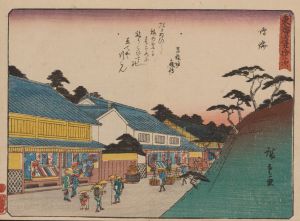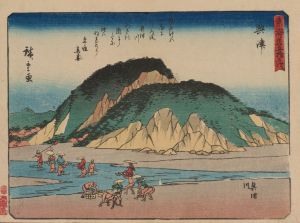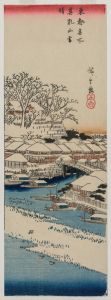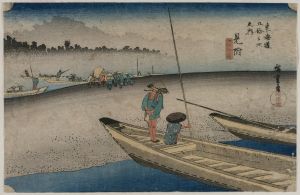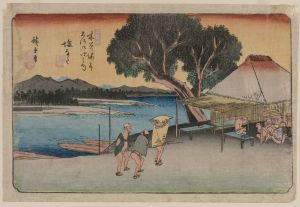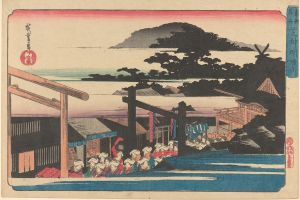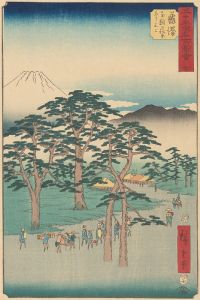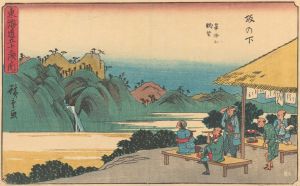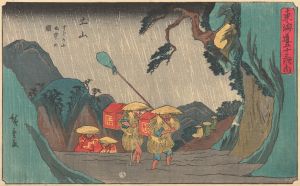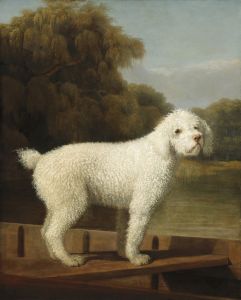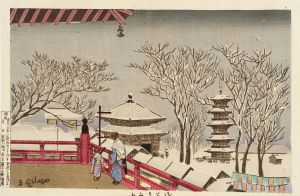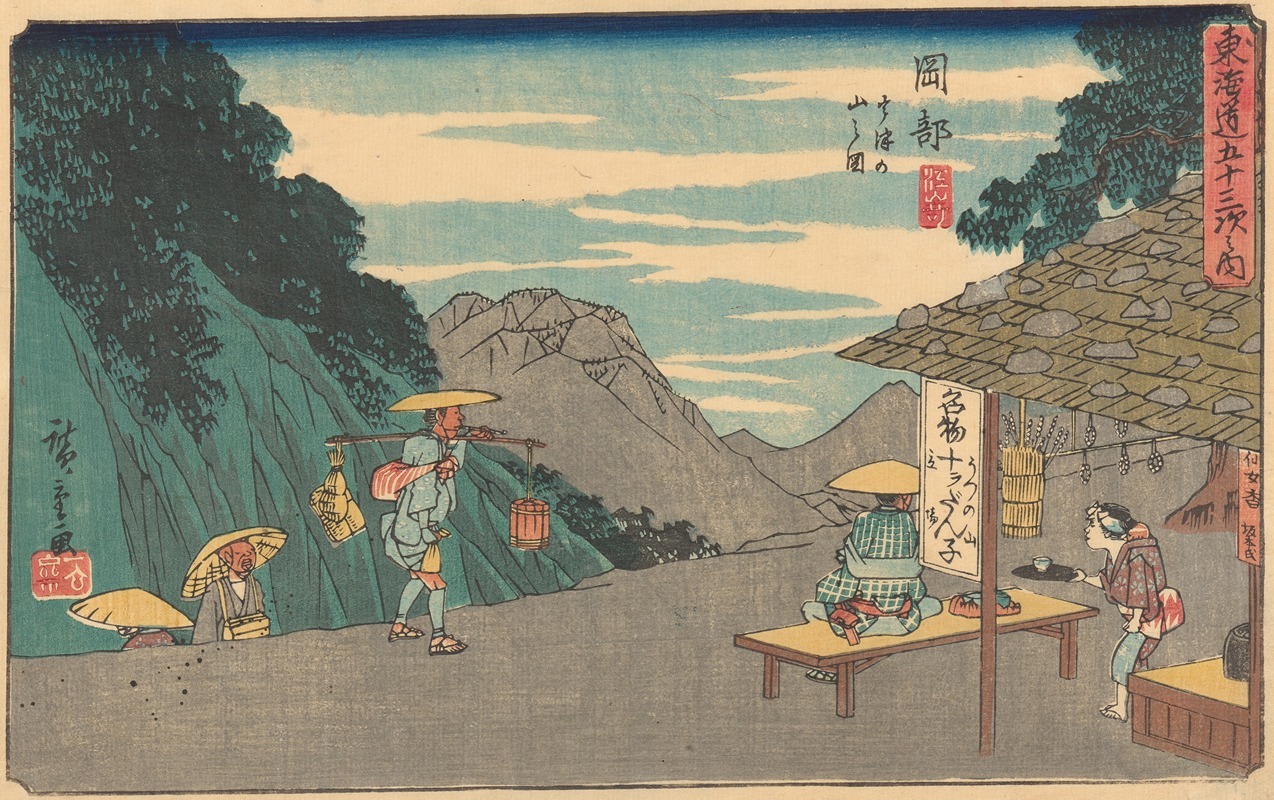
Okabe
A hand-painted replica of Andō Hiroshige’s masterpiece Okabe, meticulously crafted by professional artists to capture the true essence of the original. Each piece is created with museum-quality canvas and rare mineral pigments, carefully painted by experienced artists with delicate brushstrokes and rich, layered colors to perfectly recreate the texture of the original artwork. Unlike machine-printed reproductions, this hand-painted version brings the painting to life, infused with the artist’s emotions and skill in every stroke. Whether for personal collection or home decoration, it instantly elevates the artistic atmosphere of any space.
Andō Hiroshige, a renowned Japanese ukiyo-e artist of the Edo period, is celebrated for his landscape prints and his ability to capture the transient beauty of nature. One of his notable works is "Okabe," which is part of the series "The Fifty-three Stations of the Tōkaidō" (Tōkaidō Gojūsan-tsugi no Uchi). This series, created in the early 1830s, is among Hiroshige's most famous and influential works, depicting the scenic journey along the Tōkaidō road, the main travel and transport artery of Japan during the Edo period, which connected Edo (modern-day Tokyo) to Kyoto.
"Okabe" is the twenty-second station in this series and is known for its depiction of the landscape and travel scenes that were typical of Hiroshige's style. The Tōkaidō road was a vital route for travelers, including merchants, samurai, and pilgrims, and Hiroshige's series captures the essence of travel during this period. Each print in the series highlights a different station along the route, showcasing the diverse landscapes and cultural aspects of the regions.
In "Okabe," Hiroshige illustrates a scene that is both dynamic and serene, capturing the essence of travel and the natural beauty of the area. The print typically features travelers making their way along the road, set against a backdrop of lush greenery and rolling hills. Hiroshige's use of color and composition draws the viewer's eye through the scene, creating a sense of movement and continuity that reflects the journey along the Tōkaidō.
Hiroshige's work is characterized by its attention to detail and its ability to convey the atmosphere of a place. In "Okabe," as in many of his prints, he employs a technique known as bokashi, a method of color gradation that adds depth and dimension to the landscape. This technique, combined with his keen observation of nature, allows Hiroshige to create a vivid and immersive experience for the viewer.
The "Fifty-three Stations of the Tōkaidō" series was highly popular in its time and remains influential in the art world today. Hiroshige's ability to capture the spirit of the Tōkaidō road and the beauty of Japan's landscapes has made this series a classic example of ukiyo-e art. His work not only provides a visual record of the Edo period but also offers insight into the cultural and social aspects of the time.
Hiroshige's "Okabe" and the entire Tōkaidō series have been studied and admired by art historians and enthusiasts worldwide. The series has influenced numerous artists, both in Japan and internationally, and continues to be a source of inspiration for those interested in traditional Japanese art and the history of travel in Japan.
Overall, Andō Hiroshige's "Okabe" is a testament to his skill as an artist and his ability to capture the fleeting beauty of the world around him. Through his work, viewers are transported to a time and place where the journey itself was as significant as the destination, and the natural world was a source of wonder and inspiration.





